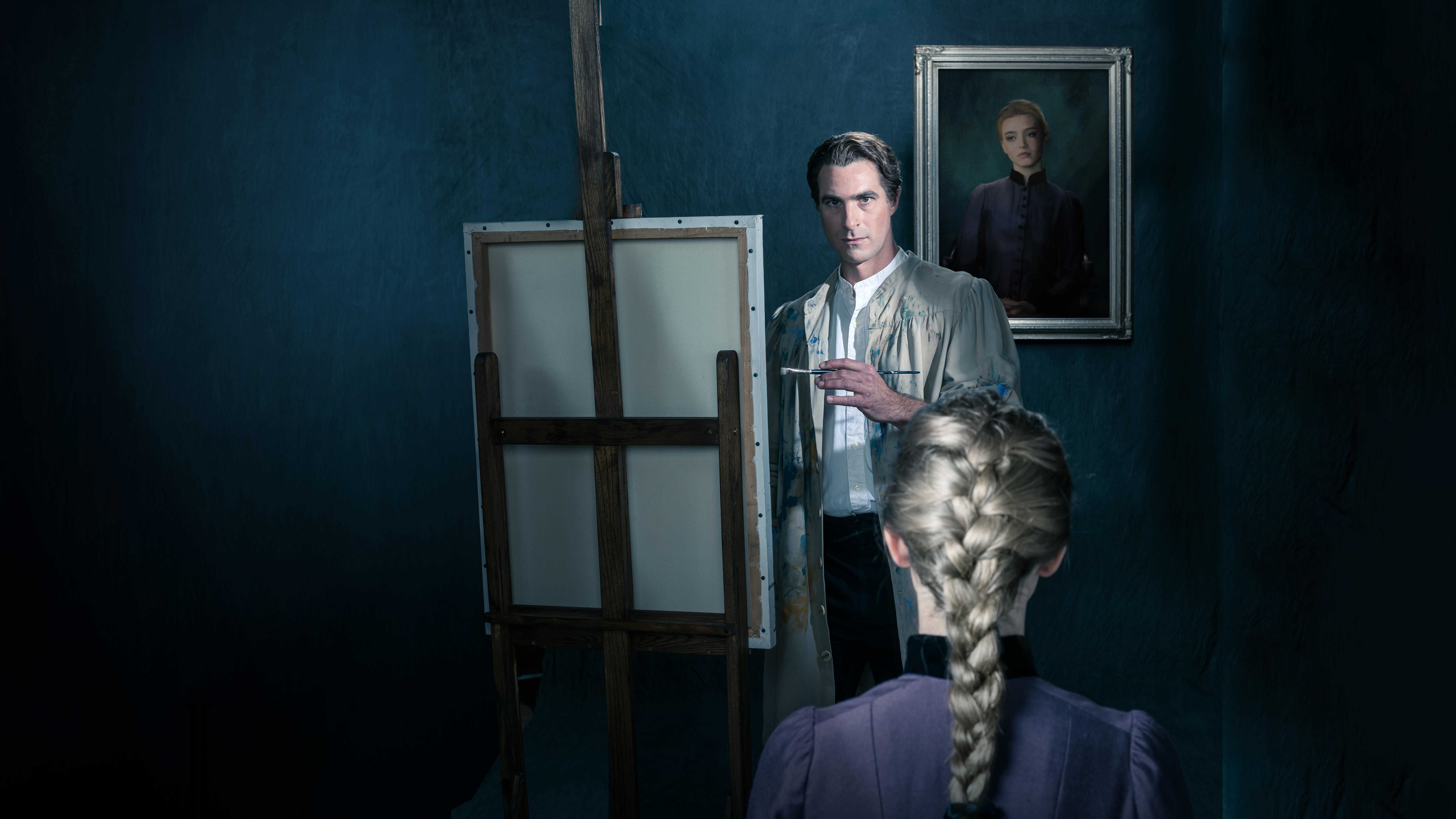Die tote Stadt (The Dead City) 101 – Plot

By: Bethany Wood and Angelica DiIorio
Korngold’s early twentieth-century masterpiece Die tote Stadt (The Dead City) may not be as familiar as some of the other operas in our 40th Anniversary Season, but it will quickly become one of your favorites! This rarely-performed masterpiece deals with grief and obsession, and it walks a fine line between reality and fantasy.
In February and March of 2023, Opera Colorado will bring a spectacular production of Korngold’s Die tote Stadt to the stage, featuring new sets and costumes. Before you head to the performance, discover the plot of the opera that thrilled European audiences when it debuted in 1920.
The Creators of Die tote Stadt
Composer – Erich Korngold (May 1897 – November 1957)
Librettist – Erich and Julius Korngold (December 1860 – September 1945)
Source Material –Georges Rodenbach adapted his 1892 novel Bruges-la-Morte into a play called Le Mirage. The play was translated from French to German by Siegfried Trebitsch before being passed on to Erich Korngold.
The Characters of Die tote Stadt
Marie (soprano) – Paul’s deceased wife. Played by Sara Gartland, making her Opera Colorado debut.
Marietta (soprano) – A lively performer who closely resembles Marie. Played by Sara Gartland.
Brigitte (mezzo-soprano) – Paul’s maid who eventually leaves him to become a nun. Played by Elizabeth Bishop, making her Opera Colorado debut.
Gaston (tenor) – A member of the same performance group as Marietta. Played by Jonathan Johnson, who returns to Opera Colorado after playing Bebbe in Pagliacci in 2020.
Paul (tenor) – A painter who lost his wife, Marie. Played by Jonathan Burton, making his Opera Colorado debut.
Frank (baritone) – A friend of Paul’s. Played by Daniel Belcher, who returns to Opera Colorado after playing Papegeno in The Magic Flute in 2015.
Learn more about the characters in The Dead City and get a preview of their costumes>>
The Plot of Die tote Stadt
Die tote Stadt—Act One
1890s, a solemn room in Paul’s house in the city of Bruges, Belgium
Paul’s housekeeper, Brigitte, and his friend Frank enter an art studio that houses mementoes of Paul’s late wife, Marie. For two years, Paul has mourned his dead wife, maintaining the room as a kind of shrine. It is filled with Marie’s portraits and belongings, including a braid of her long blonde hair displayed in a glass case. Before today, Brigitte tells Frank, Paul spoke often of how he and Bruges, the dead city, were one, both caught in worshipping the beauty of the past. Yesterday, however, Paul returned from his usual walk laughing and shouting with joy. “The dead are resurrected!” he cried, before ordering Brigitte to open the room and decorate Marie’s keepsakes with flowers.
Frank is astonished, but Paul soon arrives, bursting with excitement. Marie is alive, he tells Frank, restored to him through a woman he met yesterday, a woman who looks and sounds almost exactly like Marie. Paul believes Marie has returned to him in this woman. Frank warns Paul that trying to control death is a dangerous game. Paul, however, refuses to listen, enthralled by the idea that his wife has somehow come back to him in this woman, Marietta.
Frank leaves just as Brigitte announces the arrival of a woman. Marietta enters, and Paul marvels at what seems to be the presence of his dead wife returning to her rooms. At Paul’s request, Marietta dons a scarf and plays a lute, unaware these items once belonged to Marie.
A group of theatre performers passes by outside, singing a comic song about kissing a mistress. Marietta greets them and tells Paul she must follow them to rehearsal since she is a dancer at the theatre. When she dances, Marietta explains, she feels as if “a demon excites me, masters me, possesses me.” Paul is shocked by Marietta’s profession and passion but declares heaven has sent her to him. He tries to embrace Marietta, who dances around the room to tease him. As she dances, Marietta becomes tangled in a curtain hiding Marie’s portrait. The curtain falls, revealing a painting of Paul’s wife with the same scarf and lute Marietta now holds. Marietta understands Paul is using her to placate the loss of another woman and leaves for the theatre, where she is dancing the role of Helen in Robert le Diable.
Paul calls to Marietta, but she is gone. As he stands distraught, Marie steps out from the painting behind him. Marie tells Paul her presence still haunts the house and, through the power of the tresses she left behind, the braid in the glass case, she will keep watch over their home. Paul sinks in despair but then remembers Marietta dancing and calls her name once again.
Die tote Stadt—Act Two
Late evening a few months later, a canal and street bordering Marietta’s house in Bruges
Paul stands on the street corner, watching Marietta’s window. She did not appear at the theatre, and he has come to see if she is with another man.
A group of nuns passes by on their way to mass. Paul recognizes one of the nuns, Brigitte, his former housekeeper. Brigitte maintains his sinful relationship with Marietta drove her away, but Paul believes he is not betraying Marie, who has returned to him in the form of Marietta. Brigitte says she does not understand him and follows her sisters into mass.
Frank arrives and notices Paul watching Marietta’s house. Frank confronts Paul, telling him to return home to the memory of his wife. Paul refuses. Frank confesses he is in a relationship with Marietta, and, to prove it, shows Paul the key Marietta has given him to her house. Paul snatches the key, and Frank staggers away.
Just then, a boat of Marietta’s fellow dancers floats along the canal towards her house. They are coming to see why she missed her performance at the theatre. Paul hides and watches as they sing and laugh. Marietta enters on the arm of a handsome man named Gaston. The dancers tease Marietta for abandoning her gloomy companion (Paul) in favor of this new relationship. Marietta drinks champagne and flirts as Paul spies on her.
In a festive mood, Marietta declares that since she missed the show, she will now perform her dance from Robert le Diable. Marietta and her fellow dancers enact the part of disgraced, resurrected nuns who entice Robert (acted by Gaston) to his doom. As they perform, actual nuns walk home after mass, adding to the surreal atmosphere.
Horrified, Paul rushes to stop the macabre act. Marietta’s friends leave, as she and Paul argue. Marietta accuses him of making a scene, and he accuses her of loving Frank. Finally, Paul reveals his secret to Marietta: he has loved her only as a shadow of his true love for Marie. Stunned, Marietta confronts Paul with the fact that she herself has brought him happiness. She insists Paul confess his love for her, Marietta, not Marie. Paul admits his love for Marietta and agrees to take her to his home, where she plans to banish Marie’s ghost forever!
Die tote Stadt—Act Three
Morning the following day, the room of mementos in Paul’s home
Marietta enters in her nightgown. She compares the powerless picture of the dead woman to her own vibrant desires. As she sings, an Easter celebration begins outside. Children in the procession sing of life as Paul rushes in, distraught. The prayers and music of the church have awakened his remorse for betraying his wife. Marietta laughsand sings of Gaston as Paul becomes enthralled with the procession, his guilt mounting until, finally, he bows in prayer as the relic passes by. Marietta declares she will not share Paul with the dead, whether they be saints or his wife, and demands a kiss. Repulsed and overwhelmed with grief, Paul envisions the procession entering the room, condemning him for betraying his sacred love for Marie.
Marietta is insulted that Paul prefers mourning the dead to love and life with her. Paul orders her to leave, but she insists she will triumph over her dead rival and shatters the glass case with Marie’s braided hair. Marietta then winds the braid about her neck like a scarf and dances mockingly before Marie’s portrait. Furious at this desecration, Paul strangles Marietta with the golden braid as darkness falls on stage.
Die tote Stadt—Epilogue
The darkness lifts as Paul stands bewildered. The room looks untouched. Marie’s hair is in the case just as before and nothing has been damaged. Brigitte enters, telling him that the woman who was just with him has returned. Astounded, Paul watches as Marietta enters, retrieves her parasol, and then leaves. Frank enters, and Paul realizes his relationship with Marietta was an illusion sent as a warning of what dangers may fall if he continues to mourn his wife so fiercely. He tells Frank he will try to leave the dead city of Bruges and is finally ready to say goodbye to Marie.
Synopsis by Bethany Wood, Ph.D.—Opera Colorado’s Manager of Education & Community Engagement.
If you were intrigued by the story, you deserve to enjoy some of the music from this masterpiece live! Experience Opera Colorado’s production of Die tote Stadt (The Dead City) February 25-March 5! Tickets start at just $39>>
—
What is your favorite moment in Die tote Stadt? Is there anything you are dying to know about the opera or our production? Let us know in the comments below!



Thank you for this great synopsis and for producing Die tote Stadt. I am excited!
Thank you
Francois
Thank you for the synopsis, and YouTube visit with lead performer, Mr. Belcher.
We are looking forward to an amazing performance…
See you in two weeks!
It’s fantastic for Denver that O.C. Is presenting this gorgeous opera that is out of the mainstream. Good going!